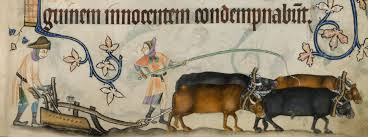This post talks about the Russian Empire one more time before we move on to exploring more about the U.S. and a young Soviet Union. This is because I think looking at the economy of the tsars will help to not only show what led to the creation of the Soviet Union, but the economic conditions that made the people want to call for radical change:
Most of the population of the Russian Empire was rural and rapidly growing, with population rising from 126 million people in 1897 to 170 million citizens 1914. Fifteen percent of the population was living in towns, cities, and urban areas. Meanwhile, less than ten percent worked in industry. Meanwhile, agriculture and farm work provided for 80 percent of the population and was dominated by the Russian peasant class. The traditional household economies of the average Russian peasant was very inefficient compared to farming in Western Europe and the United States.
Many peasants were serfs under Russian law - a feudal class of servant who was made to work the land of a private landowner or nobleman and couldn't leave this plot of land without that person's permission. Slavery was technically ended by Peter the Great, but he essentially made all slaves into serfs & became subject to taxation as well as military recruitment.

Image of Serfs from Encyclopedia Britannica Household serfdom was eventually ended in 1861 by the Emancipation Edict of Russia, liberating over 23 million Russian citizens. The serfs were not only free men, but were given freedoms like the ability to marry without needing the person of the lord/private estate that owns them. According to a 2018 study from the American Economic Review, there were "substantial increases in agricultural productivity, industrial output, and peasants' nutrition in Imperial Russia as a result of the abolition of serfdom in 1861". However, these serfs were given their freedom, but no land or guarantee of a home. Also, this stature only applied to household serfs, as serfs owned by the emperor weren't emancipated until 1866.
Small amounts of industrial capitalism coexisted with the primitive economy of Tsarist Russia. The tsars attempted to industrialize in the 1890s, but with little success. Eventually, the Russian Empire - despite having pockets of modernized society - fell behind the advanced industrialized Western nations like Great Britain, the United States, and Germany.
However, much of the Tsarist economy came from foreign investment from international private investors. In 1914, one-third of capital investment came from foreign Western nations and private businesses. This dependence on the West, combined with low productivity of labor & the ravages of World War I helped to create a rise in socialist opposition to the Tsar and the previously mentioned February Revolution.
I would like to add that people flocked to those 'pockets of modernized society', so primarily to Moscow and St Petersburg, but were met with similar, if not worse, living conditions. Due to the lack of hygiene, disease outbreaks were not uncommon. I believe that also around that time, near the turn of the century, famines were regular and brutal, causing brewing discontent amongst the peasantry